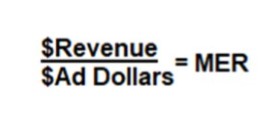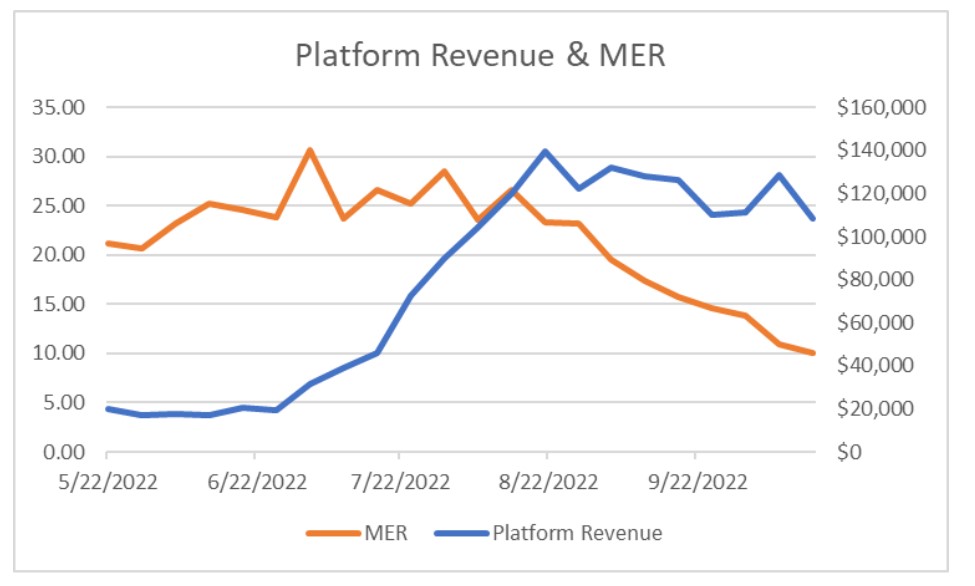What Is Marketing Efficiency Ratio? [And Why It’s Gaining Traction in 2023]

As marketers, we thrive on examining conventional metrics such as CTR (Click-Through Rate), CPC (Cost Per Click), bounce rates, and ROAS (Return on Ad Spend). However, there is an additional acronym that deserves a place in your marketing vocabulary: MER (Marketing Efficiency Ratio).
Marketing Efficiency Ratio is defined as revenue / total ad spend:

While MER may not be new, it has been steadily gaining popularity among marketers and is widely regarded as a valuable performance indicator.
At Tinuiti, we call it the “CEO Ratio” because it’s one of the high value metrics that CEOs and CFOs often ask about. Decision makers are not necessarily interested in CTR trends or even platform numbers. At the end of the day, they want to see their bottom line numbers improving and MER is a great way to track this (see example below):

Marketers are facing an inevitable wave of automation, with major players like Google promoting Performance Max and Meta advocating for Advantage Plus. While automated campaign types have shown some initial promise, they do muddy the waters in terms of attribution across ad, category, and/ or SKU performance.
The task of attributing ad dollars at various levels, be it ads, audiences, products, or channels, has become increasingly challenging. As a result of this lack of transparency, many marketers are searching for solutions to overcome these black box campaigns.
MER is a metric our experts turn to when testing automated campaigns and their sitewide impact. We know the platforms are at risk to over-inflate numbers for automated campaigns, but MER is one potential solution to provide us with insight into their true value.
In the case of advertisers overseeing multiple product lines, we’ve discovered that MER can be beneficial when it comes to testing these automated campaigns. By segmenting a specific product category, we can closely monitor budget, platform performance, and sitewide performance.
Let’s take a look at a recent campaign example:
Earlier this year, we worked with a grocery delivery company and initially saw significant performance success on Google Performance Max. However, our analysis of the campaign using MER revealed a significantly different outcome.

We increased the budget to this category (after seeing an initial spike in performance) but the campaign quickly reached a point of diminishing return. Without the incorporation of MER, we would likely have continued allocating resources to this campaign, with little to no improvement in overall category performance.
Attribution can be challenging for brands that have a long purchase cycle. There can be multiple touch points, long delays between first / last touch, and lower funnel channels and campaigns get more credit than they deserve. Using MER can help marketers understand the impact of new ad efforts, especially upper funnel initiatives.
Pro-tip: For long purchase cycles, marketers should take into account additional key metrics to provide clarity to MER including: Average Days to Conversion, New Customer percentage, and Customer Lifetime Value, etc. By leveraging these factors, marketers can refine and formulate the success of their marketing efforts (rather than just relying on platform numbers).
Important inquiries to consider include:
The objective is to analyze and detect potential “ripple effects” that may arise in the future, rather than only focusing on immediate platform performance. In other words, MER helps marketers comprehend the long-term impact.
In an era of diminishing cookie-based attribution, marketers must adapt their measurement strategies to gain a deeper understanding of advertising effectiveness. By beginning with a broad approach like MER, advertisers can establish their baseline efficiency.
Want to learn more about how MER can impact your business? Contact Tinuiti’s Paid Media experts today!
